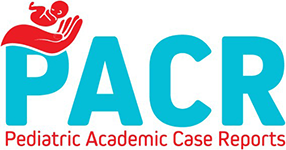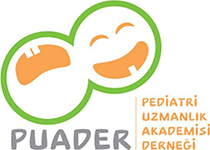Neonatal esophageal perforation caused by perinatal trauma
Laura Beth Martin1 , Francisco José García Díaz2
, Francisco José García Díaz2 , Gema Matilde Calderón López3,
Elisa García García3, Ana Isabel Garrido Ocaña3
, Gema Matilde Calderón López3,
Elisa García García3, Ana Isabel Garrido Ocaña3
1Torrecárdenas University Hospital, Pediatrics, Almeria, Spain
2Puerta De Hierro Hospital, Pediatrics, Majadahonda, Madrid, Spain
3Virgen Del Rocío University Hospital, Neonatology, Seville, Spain
Keywords: Esophageal perforation, perinatal trauma, pneumomediastinum, mediastinitis
Abstract
Background: Esophageal perforation in neonates is rare, challenging to diagnose, and associated with a high mortality rate. The condition most often arises from medical interventions, such as the insertion of enteric tubes or endotracheal intubation. Premature and low-birth-weight infants are particularly susceptible, while occurrences in full-term infants are extremely uncommon. In recent years, conservative management has become the preferred approach, with surgical intervention reserved for cases involving complications or lack of response to initial treatment.
Case report: We report a case of a term newborn who presented with respiratory distress and sialorrhea, diagnosed with an esophageal rupture, who made a full recovery with non-surgical management.
Conclusion: Neonatal esophageal perforation is a rare yet potentially life-threatening condition; however, with early diagnosis, most cases can have a favorable prognosis when managed conservatively.
Introduction
Esophageal perforation in neonates is rare, challenging to diagnose, and associated with a high mortality rate. The condition is most often attributed to medical interventions, such as the insertion of enteric tubes or endotracheal intubation. Premature and low-birth-weight infants are particularly susceptible, while occurrences in full-term infants are exceptionally rare. In recent years, conservative management has become the preferred approach, with surgical intervention reserved for cases involving complications or lack of response to initial treatment. We present the case of a term newborn that suffered an esophageal rupture during a cesarean section that simulated an esophageal atresia.
Case Report
We present the case of a 39-week neonate, born by cesarean section due to breech position. The delivery of the fetal head was complicated, and the extraction caused an elongation of the neck. Immediately, the neonate presented with sialorrhea that obstructed the airway, requiring constant aspiration and causing respiratory distress. A nasogastric tube was inserted to discard esophageal atresia, as this was our first suspected diagnosis.
A chest x-ray (Figure 1) was performed, the nasogastric tube was correctly positioned, making esophageal atresia an unlikely diagnosis. However, the newborn presented bilateral pneumomediastinum, subcutaneous emphysema in the pharyngeal area, and an abnormal collection of air in the upper lobe of the right lung.
These images suggested an esophageal rupture. A hydro-soluble contrast esophagram was performed, demonstrating a leak in the posterior wall of the cervical esophagus. The rest of the esophagus had a normal morphology. (Figure 2)
We opted for a conservative approach, including total parenteral nutrition, antibiotics, and acid suppression.
After a week the esophagram was repeated, confirming the reparation of the leak and oral nutrition was initiated. The neonate was able to eat and swallow adequately and was discharged. The six-month follow-up demonstrated an adequate evolution and a new hydro-soluble contrast swallow test, the absence of residual lesions.
Discussion
Neonatal esophageal perforation (NEP) is a rare complication. In a study conducted over ten years of 9924 infants the prevalence rate was of 15 (0.15%) of esophageal perforation [1]. In a 5-year retrospective cohort study of neonates admitted to four European Neonatal Intensive Care Units (NICUs)[2] only eight cases were found and only one was at term, the rest were preterm or low-weight. The esophagus is vulnerable to rupture as it lacks a serous layer and is covered in connective tissue. In neonates, perforation usually occurs at the narrowest part of the esophagus at the junction of the pharynx and esophagus[3]. Very low birth weight infants have weaker pharyngeal muscular and are at an even greater risk of perforation. With cervical hyperextension, this point may become injured by compression from the cervicalvertebrae. While spontaneous NEP has been described [4], naso/orogastric tube placement is the most common cause of esophageal perforation in infants [2]. Other iatrogenic causes are multiple intubation attempts and pharynx suction [2]. It is exceptional in term infants secondary to perinatal trauma.
NEP is challenging to diagnose as the clinical presentation is varied and non-specific, simulating other conditions such as esophageal atresia and pharyngeal pseudo-diverticulum [4]. The clinical manifestations may be abdominal distension, coughing, feeding intolerance, respiratory distress, apnea, hematemesis, hemodynamici instability or inability to pass anorogastric tube to the stomach. It is considered a medical emergency [5].
The final diagnosis is provided with image testing. Typical x-ray findings are nasogastric tube misplacement, pneumothorax, pneumomediastinum, and interstitial emphysema [5]. However, in most cases, a water-soluble esophagram is needed to confirm and correctly localize the leak [3].
In early cases reported, surgical reparation was the first choice [3]. However, over the last decades, initial conservative treatment has been successful, and surgical intervention should be reserved for complications or failure. The conservative treatment consists of intravenous antibiotics and oral intake restriction [4]. The patients must receive total parenteral nutrition (TPN) for at least seven days, reducing contamination of the esophageal wound and allowing it to heal. Antibiotics must have a broad-spectrum, with gram-negative and anaerobic coverage, typically piperacillin/tazobactam with or without vancomycin [3].
The esophagram must be repeated after seven days, and if there is no further leak, enteral nutrition may be started with an orogastric tube. If there is still an image of perforation, TNP and antibiotics must be continued for another seven days [3].
Early diagnosis is the most favorable prognosis predictor with non-operative treatment [3]. Late diagnosis is associated with complications, such as abscess, mediastinitis, pneumothorax, pleural effusion, empyema, and multi-organ failure [5].
Conclusion
NEP is a rare but life-threatening condition that has a favorable prognosis with conservative management in most cases if the diagnosis is early. Low-weight and pre-term infants are at higher risk and cases like the one we describe, in a term neonate secondary to obstetric trauma, are exceptional.
Established facts
• Low-weight and pre-term infants are at higher risk for NEP.
• Initial conservative management is recommended, and surgical intervention should be reserved for complications or failure.
Novelty insights
• Term infants are also at risk for iatrogenic NEP.
• NEP may simulate esophageal atresia and must be considered in the differential diagnosis.
• NEP can be life-threatening, but an early diagnosis and management can lead to a favorable prognosis.
Cite this article as: Martin LB, García Díaz FJ, Calderón López GM, García EG, Garrido Ocaña AI. Neonatal esophageal perforation caused by perinatal trauma. Pediatr Acad Case Rep. 2025;4(3):52-4.
The parents’ of this patient consent was obtained for this study.
The authors declared no conflicts of interest with respect to authorship and/or publication of the article.
The authors received no financial support for the research and/or publication of this article.
References
- Elgendy MM, Othman H, Aly H. Esophageal perforation in very low birth weight infants. Eur J Pediatr.2021;180(2):513-518. doi:10.1007/s00431-020-03894-z
- Sorensen E, Yu C, Chuang SL, et al. Iatrogenic neonatal esophageal perforation: A European multicentre review on management and outcomes. Children (Basel). 2023;10(2):217. Published 2023 Jan 26. doi:10.3390/children10020217
- Rentea RM, St. Peter SD. Neonatal and pediatric esophageal perforation. Semin Pediatr Surg. 2017;26(2):87-94. doi:10.1053/j.sempedsurg.2017
- Hesketh AJ, Behr CA, Soffer SZ, Hong AR, Glick RD. Neonatal esophageal perforation: Nonoperative management. J Surg Res. 2015;198:1-6
- Adel MG, Sabagh VG, Sadeghimoghadam P, Albazal M. The outcome of esophageal perforation in neonates and its risk factors: a 10-year study. Pediatr Surg Int. 2023;39(1):127. doi:10.1007/s00383-023-05417-x





